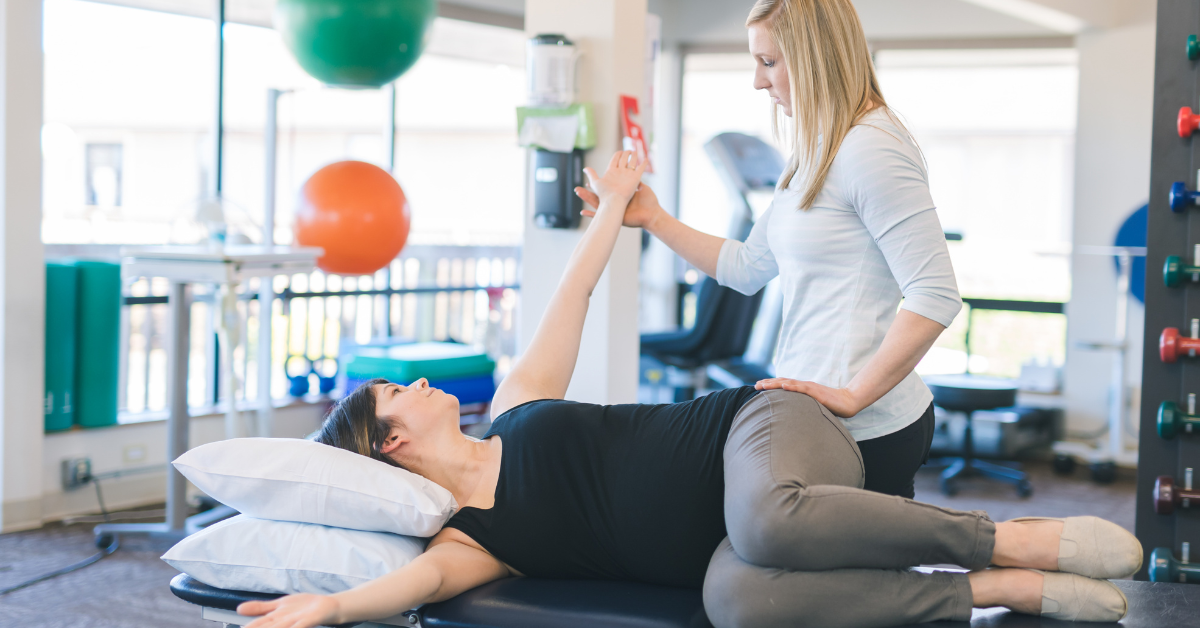Physical therapy emphasizing aiding women throughout their postnatal recovery is known as postpartum physical therapy. After childbirth, the postpartum period begins when a woman’s body goes through important changes to mend and recover after pregnancy and delivery. Postpartum Physical Therapy aims to help women regain strength, mobility, and overall well-being by addressing the physical and mental difficulties they may experience during this time.
Learning About the Postpartum Period:
A woman’s life goes through a unique stage after giving birth called the postpartum period, marked by hormonal changes, physical healing, and the demands of caring for a newborn. Stretching of the abdominal muscles and ligaments and hormone changes that release joints and ligaments in preparation for birthing are just a few of the adaptations the body goes through during pregnancy. These alterations eventually reverse after delivery, but the body needs time to fully recover.
Physical therapists focusing on postpartum care are familiar with the challenges of postnatal recovery and offer personalized therapy plans to meet each woman’s unique needs.
Postpartum Physical Therapy’s Function:
Physical therapy after childbirth is essential for helping mothers through their healing process. The following are some important facets of postpartum physical therapy’s function:
Pelvic Floor Rehabilitation: The pelvic floor muscles are put under a lot of strain during pregnancy and childbirth, which can result in problems, including urine incontinence and pelvic organ prolapse. Specialized pelvic floor exercises and procedures are used in postpartum physical therapy to retrain and strengthen these muscles, improving bladder control and pelvic support.
Management of Diastasis Recti: Postpartum women frequently experience diastasis recti, a disorder where the abdominal muscles separate due to pressure from the expanding uterus. Exercises that can help narrow the abdominal gap and regain core strength are incorporated into postpartum physical therapy.
Physical therapists who specialize in postpartum care place a strong emphasis on regaining core strength and stability. It is essential to strengthen the core muscles to encourage good posture, lessen back pain, and avoid injuries while carrying out daily tasks and taking care of the newborn.
Addressing Musculoskeletal Problems: Back pain, pelvic pain, and joint discomfort are just a few musculoskeletal problems that can develop during pregnancy and childbirth. To treat these problems and enhance general mobility and comfort, postpartum physical therapy uses manual methods, therapeutic exercises, and stretches.
Scar Tissue Management: After an episiotomy or cesarean section, scar tissue may form, causing pain and limiting motion. Scar tissue mobilization techniques are used in postpartum physical therapy to ease discomfort and increase tissue flexibility.
Postpartum physical therapists instruct new mothers on good posture and body mechanics for tasks like lifting the infant, nursing and carrying a diaper bag. Using these techniques can avoid strain and accidents when completing regular duties.
Emotional Support: For new mothers, postpartum can present several emotional difficulties. Postpartum physical therapists encourage and support their patients emotionally during the healing process.
The following is a list of the benefits of postpartum physical therapy:
During their postnatal recovery, women can reap several advantages by participating in postpartum physical therapy:
- Faster Recovery: Postpartum physical therapy’s targeted exercises and approaches help women recover more quickly from the physical effects of pregnancy and childbirth.
- Pelvic floor therapy aids in preventing and treating pelvic floor problems, which improves bladder and bowel control.
- Strengthened Core: Regaining core strength increases stability and lowers the chance of injuries and back pain.
- Pain relief: Physical therapy can address musculoskeletal problems that are causing pain and discomfort throughout pregnancy and delivery.
- Increased Confidence: Providing women with education and individualized treatment during the postpartum period develops confidence in their bodies.
Conclusion:
Postpartum physical therapy is a helpful tool for women looking to heal from childbirth and regain strength and function. Postpartum physical therapy offers a thorough strategy for postnatal recovery, emphasizing pelvic floor rehabilitation, core strength, and addressing musculoskeletal disorders. Postpartum physical therapists substantially contribute to improving new mothers’ well-being and general quality of life during this transforming moment by offering specialized care and emotional support.

